2024 Redistricting
In the 1960s, Jim Crow laws dictated seating arrangements on buses — “colored” people in the back, whites in the front. At bus stations, blacks and whites entered through separate doors, used separate restrooms and water fountains, and sat at separate lunch counters.
When a Greyhound bus carrying black and white Freedom Riders arrived at the Anniston Greyhound bus station on May 14, 1961, it was attacked by a mob of whites who were protesting desegregation of public transportation facilities. (1)
As the Riders remained on board, the mob hit the bus with bats and pipes, slashed its tires, and shouted insults. After local law enforcement intervened, the bus departed for Birmingham. (2) Six miles outside of Anniston on Alabama Highway 202, the bus was forced to stop because of its slashed tires. The pursuing mob intensified its attack, setting the bus on fire and attacking the passengers as they fled the burning bus. The violence prompted a federal investigation. (3)
At the 40th anniversary commemoration of the Freedom Riders in Anniston in May 2021, Freedom Rider Hank Thomas was asked why he risked his life that day, to which he stated, “I had seen something wrong, and I did something about it.”
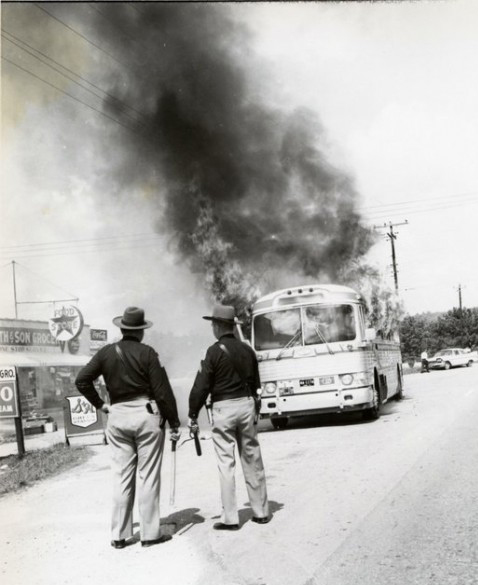
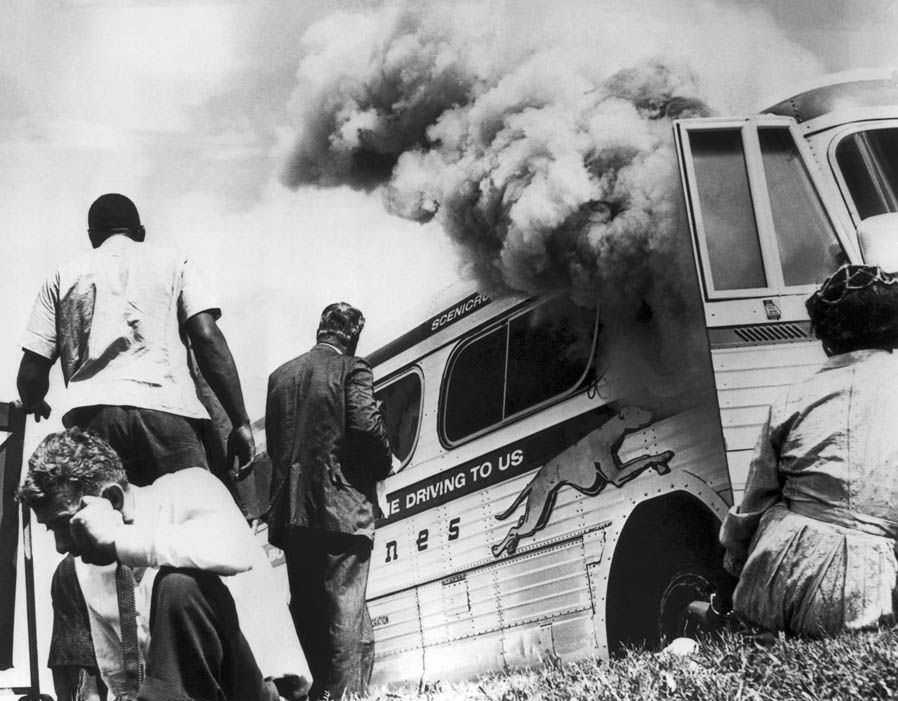
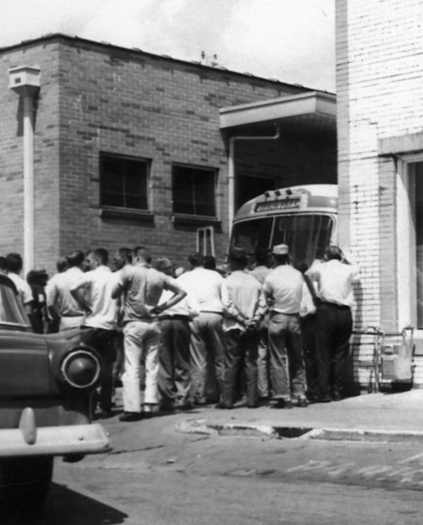
In January 2017, President Barack Obama leveraged the Antiquities Act of 1906 and proclaimed two historic sites in Calhoun County, Alabama, as the “Freedom Riders National Monument,” creating the nation’s first national monument dedicated to telling the story of the Freedom Rides. The two sites included the Greyhound Bus Station and the Freedom Riders Park, located at the site of the bus burning 6 miles west of Anniston off Highway 202.
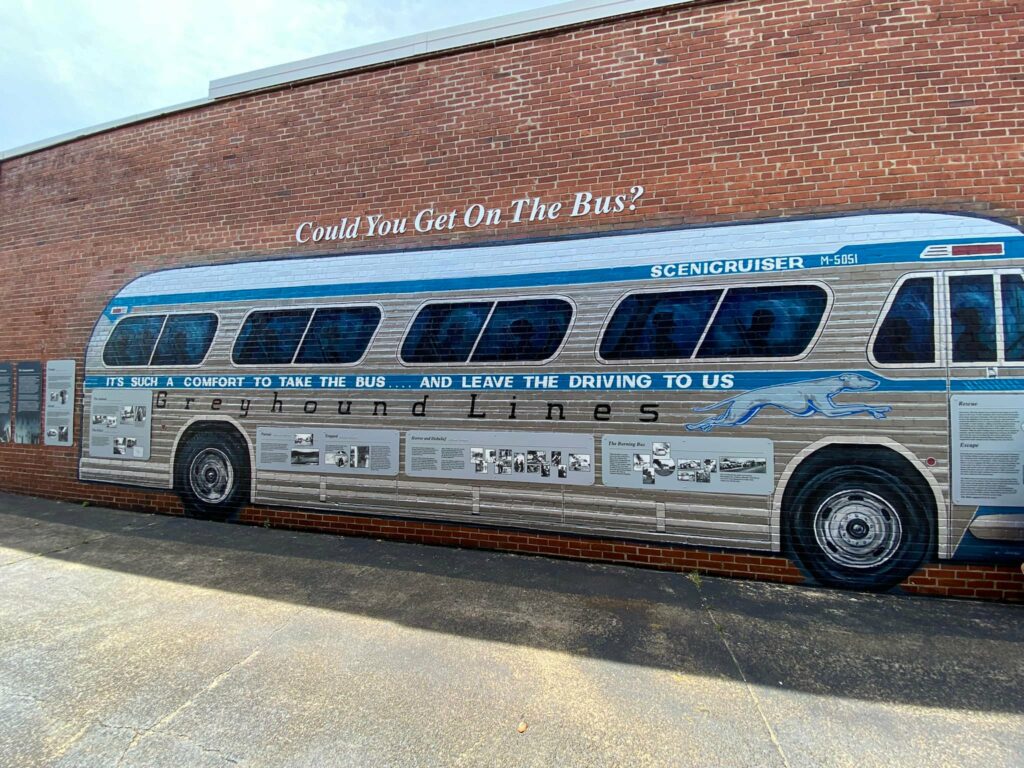
The Freedom Riders National Monument is located at 1031 Gurnee Ave, Anniston, AL 36201
Follow the Freedom Riders National Monument Facebook page for more news, events, and information:
In May of 2021, the City of Anniston hosted a 60th Anniversary commemoration of the Freedom Riders. The master of ceremonies for this event was Anniston’s youngest ever City Councilwoman, Ciara Smith. The guests of honor were Freedom Riders Hank Thomas and Charles Person.
After hearing Thomas and Person explain how they both know their journey in life may soon end with the coming of old age. Councilwoman Smith confidently looked towards the two men and in reference to their life’s cause, she said, “Someone like me, (who is) standing in an official elected position…because of you, I can do that….when you pass through to the next life, know that I will still be ‘breathing’ for you.”
Then Anniston Mayor, Jack Draper, summed it up well when he said, “…to the Freedom Riders, we thank you for your courage, your selflessness and your dedication to the cause that opened this nation’s eyes to the struggle for civil rights. This national monument will assure that your contribution to humanity will never be forgotten.”
Click here to read the Freedom Rider 60th Anniversary Commemorative Booklet.
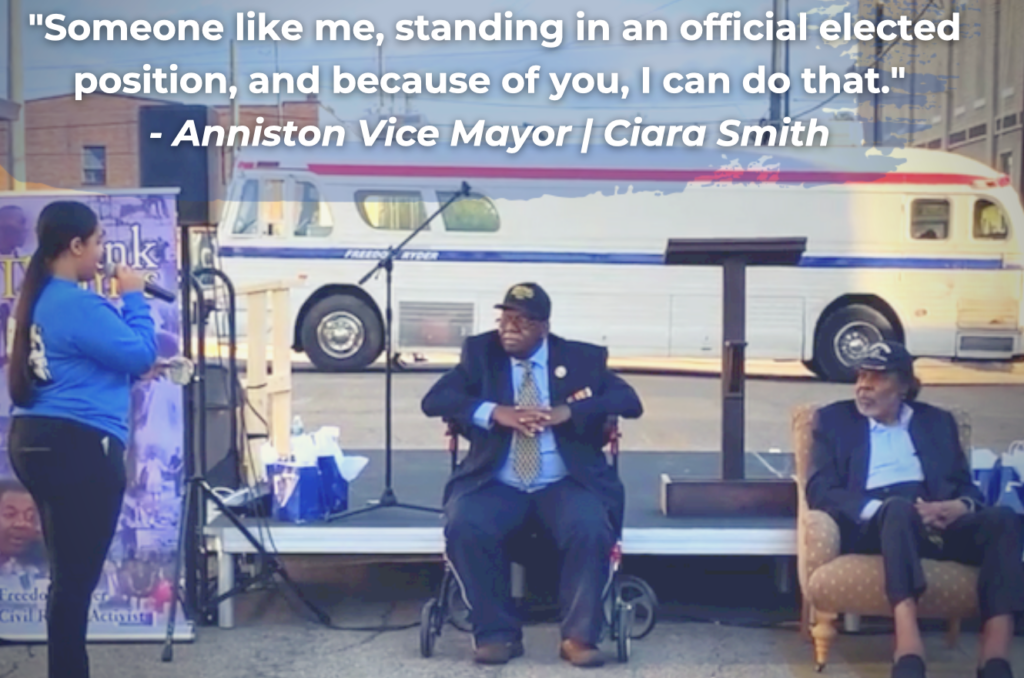
Hank Thomas was only 19 in 1961 when he took his roommate’s place on the ill-fated Greyhound Bus that would travel to the Deep South. Thomas, a student at Howard University, quickly joined the Congress of Racial Equality (C.O.R.E.), the organization that was planning “Freedom Rides” to test desegregation of public transportation in the South.
The members’ goal was to force the federal government to enforce the Supreme Court’s 1960 decision in Boyton v. Virginia that segregated waiting rooms, lunch counters and restrooms in interstate facilities was illegal. Thomas survived the attack on his bus in Anniston and continued his work as a civil rights activist.
He served his country in Vietnam, and is now a successful businessman living in Atlanta. He claims a “rap sheet” of 22 arrests in the cause of civil rights and continues to speak against prejudice in any form. (4)
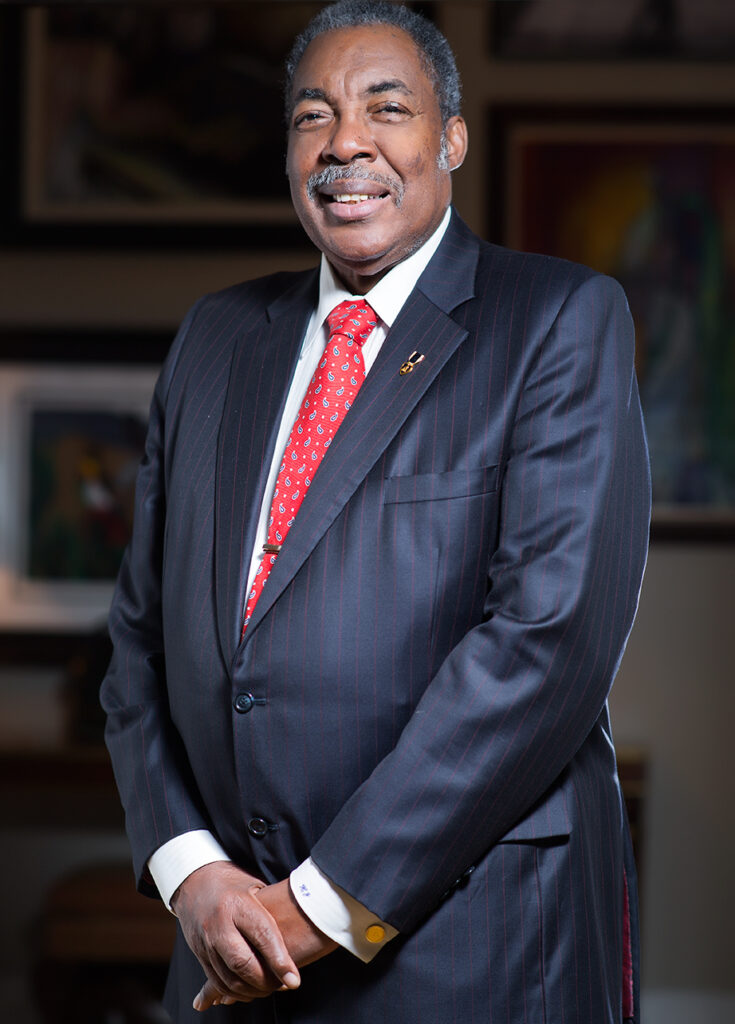
Front: This was the site of the Greyhound bus terminal where on May 14, 1961, a bus carrying black and white Civil Rights Activists known as “Freedom Riders” was attacked by a mob of whites who were protesting desegregation of public transportation facilities.
As the Riders remained on board, the mob hit the bus with bats and pipes, slashed its tires, and shouted insults. After local law enforcement intervened, the bus departed for Birmingham.
(Inset photo: Protestors at Greyhound Bus Station. Photograph courtesy Public Library of Anniston and Calhoun County).
Back: Six miles outside Anniston on Alabama Highway 202, the Greyhound bus that had been attacked earlier by a mob of white extremists on this site was forced to stop because of a deflated tire. The pursuing mob intensified its attack and set the bus on fire, forcing the riders to depart. On board were “Freedom Riders” who were testing Boynton v. Virginia, the Supreme Court decision that segregation of public transportation was illegal.
Six miles outside Anniston on Alabama Highway 202, the Greyhound bus that had been attacked earlier by a mob of white extremists on this site was forced to stop because of a deflated tire. The pursuing mob intensified its attack and set the bus on fire, forcing the riders to depart. On board were “Freedom Riders” who were testing Boynton v. Virginia, the Supreme Court decision that segregation of public transportation was illegal.
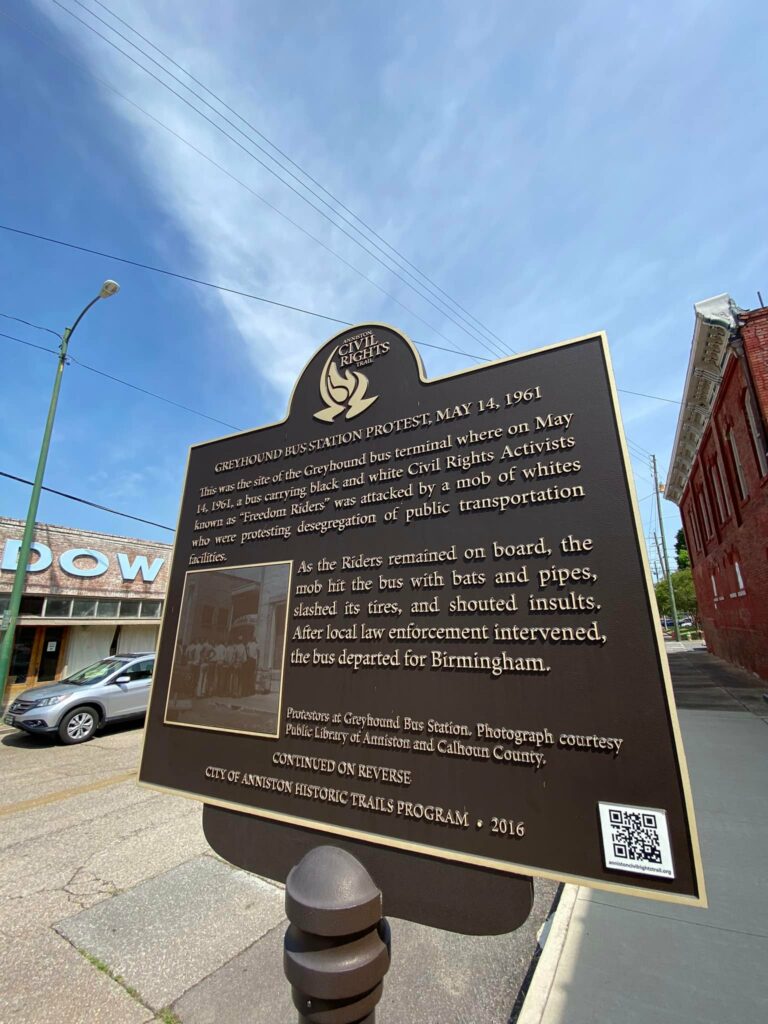
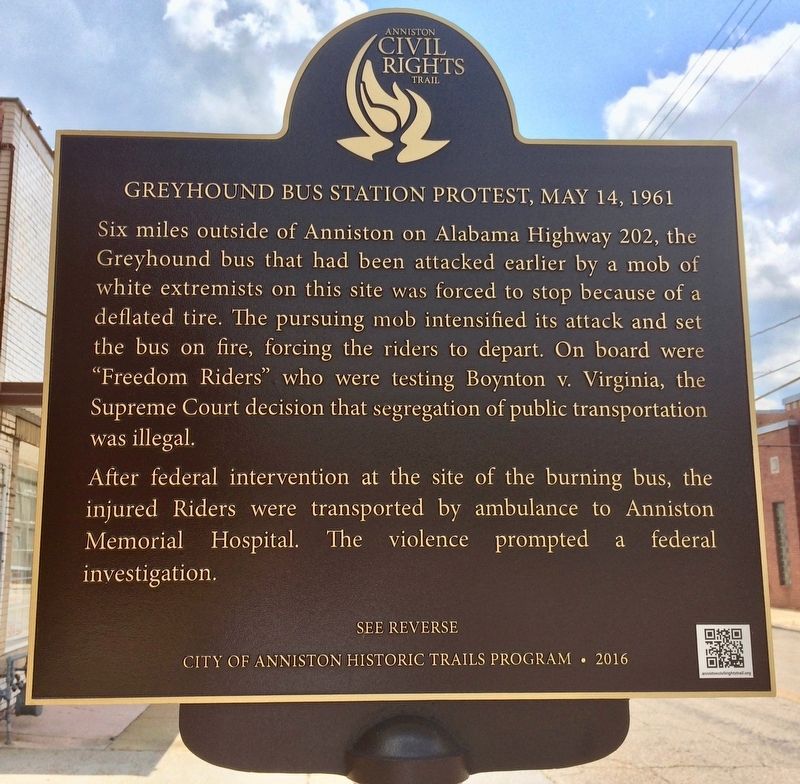
1031 Gurnee Avenue, Anniston, Alabama 36201
(Mural exhibit at this site)
(1) “Boynton v. Virginia 364 U.S. 454 (1960).” Just Law. US Supreme Court, 5 Dec. 1960. Web. 10 Jan 2016.
(2) Jones, Sam. “Mob Rocks, Burns Big Bus in County Racial Incidents.” The Anniston Star 15 Jan. 1961, Vol. 80, No. 234: 1A-10A. The Anniston Star Archives. Web. 8 Jan. 2016.
(3) Ibid.
(4) TIME Magazine, August 26/September 2, 2013; Finley, Taryn. “The Root”. Posted June 24, 2014. Retrieved from: http://www.theroot.com/articles/history/2014/06/ freedom_rider_hank_thomas_civil_rights_activist_reflects_on_the_struggle

Sign up for our Quarterly Newsletter, upcoming event information, and more! This is the best way to stay informed on the latest news, activities, and happenings throughout the Model City!
Translate
Translate